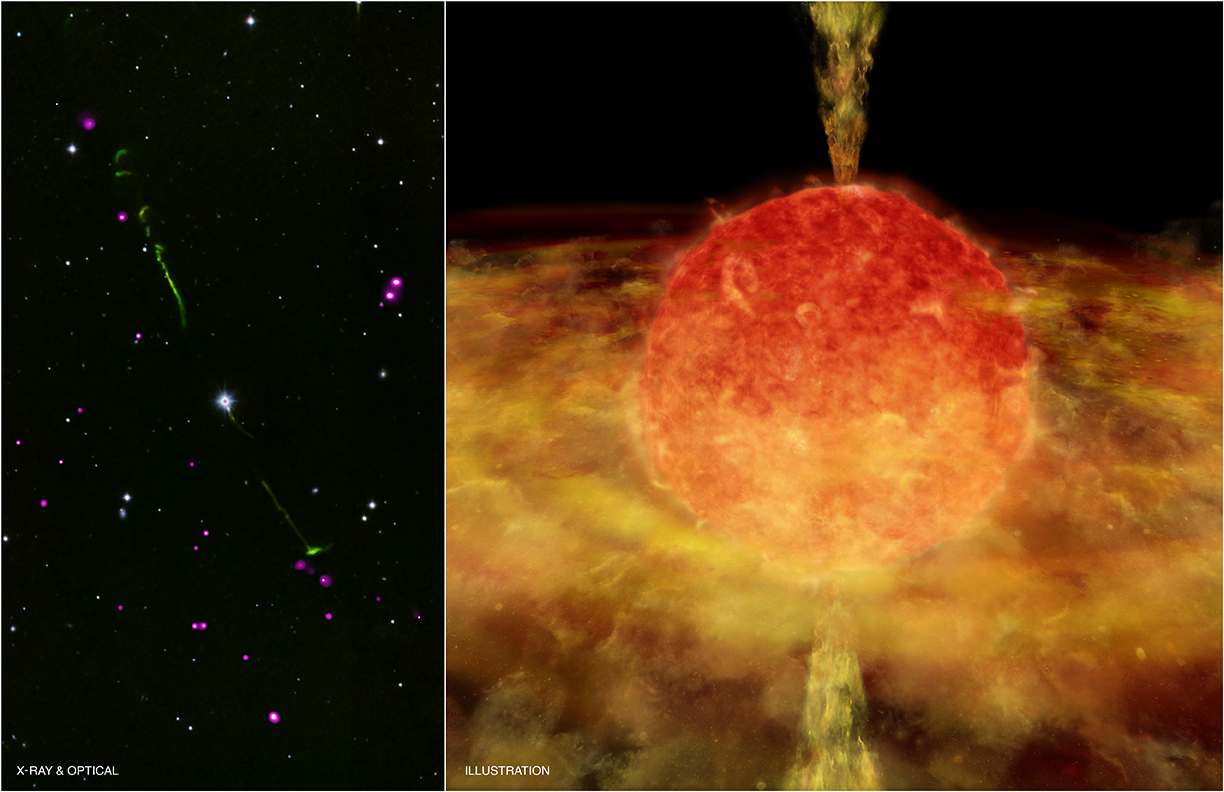A few days ago, Phil Plait of Bad Astronomy fame, posted an
article about a very unusual star. The image shown below is a combination of an optical image from the Lick Observatory and the orbiting Chandra X-Ray Observatory:

Note the jets (in green) streaming away from the central star. Those are usually found in young, rapidly spinning stars. Only problem, the star in question, BP Piscium, is an old, red giant. Interesting conundrum; the solution is fascinating.
Main-sequence stars, including our sun, become red giants as the age. As they become red giants, they expand; in the process they may engulf their own, close-orbiting planets. Now imagine that happening with a 'hot Jupiter,' a gas giant planet orbiting near its primary. That seems to be what's happening with BP Psc, producing the rapid rotation which produces the jets.
When a star expands, its rotation slows too. The usual example is of a figure skater who can increase their rate of spin by drawing in their hands youve seen it many times, no doubt. The opposite is true as well: if you spin rapidly, you can open up your arms to slow down. Stars do the same thing: a star like the Sun that takes once per month to spin now might take years to rotate once around when it becomes a red giant.
Now imagine a big planet like Jupiter (or a very small red dwarf star) orbiting close in to a star like that. It may orbit the star in a matter of days or weeks, and remember the star itself rotates far more slowly than that. When it expands and swallows up that planet, the planet wont just vaporize; it can take years for it to totally be destroyed. And during that time its orbiting inside the star! A star is just gas, and when it becomes a red giant it gets big and its density drops even more. As bizarre as it sounds, something much denser like a planet can orbit inside a red giant for some time.
So the planet is inside the star, mixing it up like a whisk in a bowl of batter. This can cause all sorts of havoc, including making the star to expel material along its equator to form a disk. A lot of that matter might be from the companion itself, broken up in the chaotic process.
Fantastic stuff! Now, who was it who said: "The universe is not only stranger than we imagine.
It's probably stranger than we can imagine!"